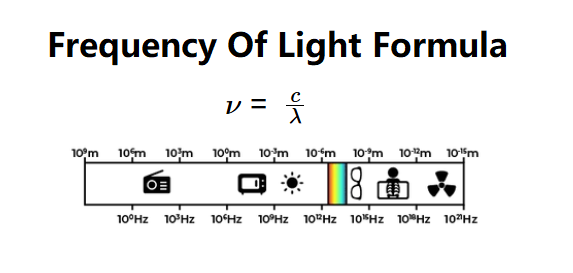 Home
Home
 Back
Back

Definition: This calculator computes the frequency (\( \nu \)) of light based on its wavelength (\( \lambda \)) using the relationship between the speed of light, frequency, and wavelength.
Purpose: It is used in optics and physics to determine the frequency of electromagnetic waves, such as visible light, X-rays, or radio waves, given their wavelength.
The calculator uses the following equation:
Where:
Steps:
Calculating the frequency of light is crucial for:
Example 1: Calculate the frequency of visible light with a wavelength of 500 nm:
Example 2 (Different Wavelength): Calculate the frequency of an X-ray with a wavelength of 1 Å:
Q: What does the frequency of light tell us?
A: The frequency determines the energy of the photons (\( E = h \nu \)) and the type of electromagnetic radiation (e.g., visible light, X-rays, radio waves).
Q: Why does a shorter wavelength result in a higher frequency?
A: Frequency and wavelength are inversely proportional (\( \nu \propto \frac{1}{\lambda} \)). A shorter wavelength means the light wave oscillates more times per second, increasing the frequency.
Q: Can this calculator be used for light in a medium?
A: This calculator assumes light travels in a vacuum (\( c = 299,792,458 \, \text{m/s} \)). In a medium, the speed of light is slower, and the equation would need to be adjusted (\( \nu = \frac{v}{\lambda} \), where \( v \) is the speed in the medium).